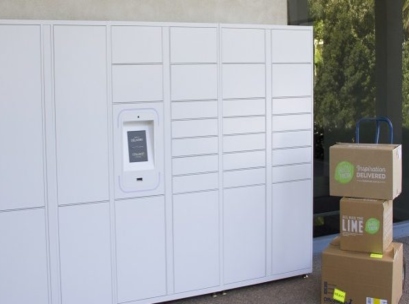 As e-commerce growth drives parcel volumes through the roof, parcel lockers are increasingly seen as a way to meet increased consumer demand for after-hours delivery and free shipping.
As e-commerce growth drives parcel volumes through the roof, parcel lockers are increasingly seen as a way to meet increased consumer demand for after-hours delivery and free shipping.
Australia Post has expanded its network of parcel lockers through tie-ups with shopping centres and retailers like Woolworths over the past few years, and CouriersPlease has launched an equivalent service with over 1000 location recently.
But now, a Melbourne-based startup is looking to make parcel lockers even more ubiquitous and convenient for consumers by installing lockers in the lobbies of office towers and apartment buildings and allowing any delivery service to access them.
Since launching in May 2018, Groundfloor has installed parcel lockers at a number of residential, commercial and student residential locations in Melbourne, including The Clarendon and Swinburne University, and has more installations booked for 2019.
According to Groundfloor, the lockers are currently used by delivery drivers from Australia Post, Toll, Fastway Couriers, DHL, StarTrack, FedEx, CouriersPlease, Zoom2U and others. It believes its courier-inclusive approach is necessary to reduce costs for all parties in the supply chain.
“In Australia, consumers have come to expect goods to appear on their doorstep at no cost to them. Margin-conscious e-tailers don’t want to bear the cost, so have put the squeeze on couriers to make growing volumes of deliveries at unsustainable per parcel rates,” Groundfloor co-founder and director Lauren Melton told Internet Retailing recently.
Recent research from CouriersPlease backs this up. In a survey of more than 1000 Australians, the delivery service found that 80 per cent of Aussies want the option of having their parcels delivered after hours, including weekends, and 73 per cent want a three-hour or same-day parcel delivery service.
Despite this, almost half of respondents are unwilling to pay extra for these services, and 28 per cent would only pay up to $5. Eighteen per cent would spend between $5-10, and only 7 per cent would pay $10 or more for after-hours delivery.
Groundfloor noted that retailers like Amazon helped create this situation by conditioning customers to expect free shipping.
“They now face the stark reality that there is no such thing as free shipping. Someone in the supply chain: retailer, distributor, courier, or customer must bear the cost,” Melton said.
“It was a mistake for the retailers to condition customers this way – and bit by bit this practice is being unwound. For example, some retailers have begun to offer the customer alternative delivery options at varying price points.”
Groundfloor believes more retailers need to move towards charging customers different prices for different types of delivery.
“Pick up in-store or shopping centre collection point? That’s free. Delivery to your apartment building’s on-premises parcel lockers? That’s another price. Want it in two hours? Break open your wallet,” Melton said.
“Giving the consumer choices…can slowly shift the consumer’s mindset, align revenue with costs and ultimately rebalance the supply chain.”
This story first appeared on sister site Internet Retailing.
Access exclusive analysis, locked news and reports with Inside Retail Weekly. Subscribe today and get our premium print publication delivered to your door every week.





